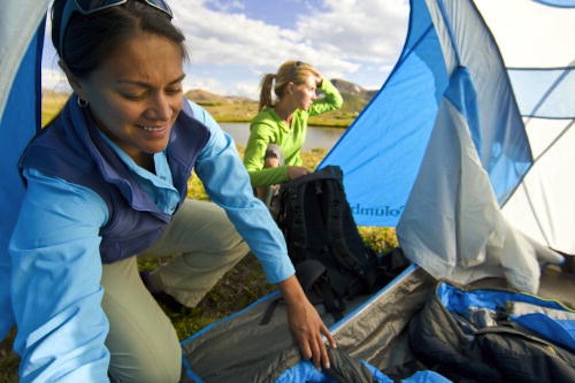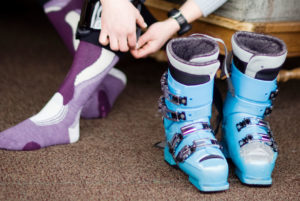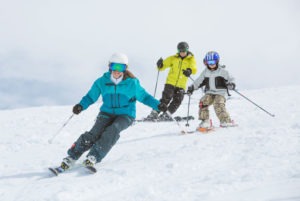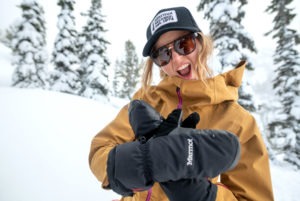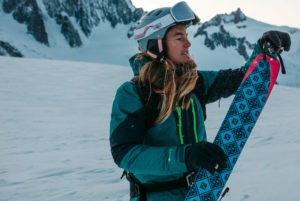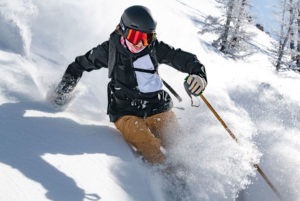
The most ideal way to regulate your body temperature and to remain comfortable in the outdoors is to dress in layers. It’s a proven concept that works! The best part about dressing in layers is that it’s easy to remove or add a layer when you’re on the trail or on the slopes. Instead of having to decide whether to dress super warm or on the lighter side, you can prepare for any temperature with layers. Just peel off a fleece if you get too hot or add a down insulator on the coldest days. Before we get too deep into it, let’s break down the various types of layers…
Base Layer – Moisture Wicking
Sitting directly against the skin base layer is sort of like an extra coat of skin. It is your temperature regulator. It makes sure to keep perspiration away from your body and out of your clothes. In other words, base layers draw moisture from the body to prevent chilling and then transport it to the outer edge of the fabric (hence, wicking). Some are also designed to trap air to keep you warm. For the warmer months, keeping the body dry is important to stay cool and comfortable. Cotton is an awful base layer fabric since it retains moisture and can lead to wet, clammy and later cold body conditions.
Now, here’s where base layers can get confusing. They’re not just for days on the slopes or sledding hill. These days, you can find underwear, boxers, tanks, tees, lightweight long-sleeve shirts, heavier shirts, and even hooded shirts in base layer fabrics of various weights. Hit the pavement running this summer with a base layer tee that will wick the moisture away from your body during the entire 10K. And don’t be caught doing anything active without some base layer boxers or briefs!
Base layer (women’s) is available in three popular fabric – wool, silk, or synthetic. If you’re a heavy sweater, look for a base layer with maximum moisture wicking abilities, with wool or synthetic fibers. If you tend to run cold on the slopes, go for base layers with higher insulating properties like wool or silk. The House has a wide selection of base layer tops and bottoms from top selling brands likes Patagonia and Burton with a ton of style options.
Mid-Layer – Insulation
On top of the base layer, lies the mid-layer for insulation. It will protect you from the cold by trapping air and heating it by keeping it close to the body. Mid-Layers are often made with quick drying materials, like polyester, to add to the moisture management. Insulating layers are available in a few different fibers – natural fibers, classic fleece, and wind fleece. Natural fibers such as wool and goose down are excellent insulators and are the warmest option. Wool is unique because it continues to insulate even if it gets wet. Goose down, on the other hand, must be dry in order for it to insulate. Down is a popular mid-layer because it has a an extremely high warmth to weight ratio and is best for the coldest days.
Classic fleece, like wool, will continue to insulate even if it gets wet. It’s typically made of polyester and dries extremely quickly if it does get wet. The main downside to fleece is that it can be bulky. These days however, manufactures like Patagonia, The North Face and Marmot have designed various weights in their classic fleece offering – lightweight, mid-weight and expedition weight to meet the needs of various conditions. Lightweight fleece is ideal for aerobic activity like skate skiing or mild temperatures. Mid-weight fleece is best for moderate activity like snowshoeing and moderate temperatures. Expedition weight is ideal for low activity like winter camping and cold temperatures.
Finally, wind fleece is another option for a mid-layer. It is exactly what it sounds like – a fleece with wind blocking abilities through a membrane embedded in the fabric. The fleece will still have all of the quick-drying and insulating properties as a classic fleece. Look for Polartec WindPro™ or Gore WindStopper™ within The House’s huge selection of fleece.
Shell Layer – Weather Protection
The shell layer is the outermost layer of clothing that is your first line of defense against the elements – rain, snow, sleet or wind. Shells can be as simple as a rain jacket or as technical as a $500 mountaineering jacket. All shells are designed to be breathable and to keep the outside moisture from seeping inside your jacket. Most shells are treated with DWR, or durable water repellency, which causes water droplets to bead off the fabric. A shell layer is a must-have for any precipitation or temperatures over under 4o degrees. There are several fabric and weight options to choose from:
- Insulated – A synthetic or natural layer of insulation is built in to insulated jackets for cold conditions. While it will keep you warm, it’s not the best choice for optimum body temperature regulation. It can get quite toast inside your jacket should your aerobic level rise, regardless of the outside temperature.
- Waterproof/non-breathable – These lower priced shells are typically made of a polyurethane coated polyester that will keep the rain out, but won’t allow your perspiration to exit the jacket. Such jackets are good for sedentary uses like fishing, tailgating or watching your son’s rainy soccer game.
- Softshell – For maximum breathability and range of movement, soft shells are ideal for high aerobic activities in cold weather like skate skiing or snowshoe racing. They aren’t completely waterproof like a technical shell, but they will certainly keep more rain and snow out than a fleece.
- Waterproof/Breathable Shells – These are the most common type of shells and are the best defense against virtually any weather condition. Waterproof/breathable typically have a higher price tag, but they’ll last far longer than a shell that’s not breathable and they’ll live beyond their expectations in terms of keeping you dry and protected. Skiiers, snowboarders and alpine climbers are attracted to waterproof/breathable shells since they will shield their bodies from anything mother nature throws at them. For the coldest days, a down insulator or high loft fleece can be work beneath a shell for bomber protection.
- Water-resistant/Breathable Shells – A step down from a waterproof/breathable shell in terms of price and function, water-resistant shells are usually made of tightly woven fabric that block wind and light rain. These are great for mild weather and moderate aerobic activity.
